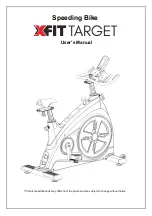
Bedienung:
Typ 5055 ohne Fernbetätigung , Ausführung A
Die Anhängekupplung ist geschlossen und gesichert, bzw. gekuppelt, d.h: die
Zugöse ist eingefahren, der Kuppelbolzen unten, die Sicherung eingerastet,
der Anzeigestift liegt in Geschlossenstellung der Sicherung bündig am
Sicherungsdeckel des Kuppelmechanismus an.
Entsichern und Öffnen der Anhängekupplung:
Zum Öffnen wird der Handhebel bis zur oberen Endstellung betätigt und
anschließend losgelassen. Hierdurch ist der Kuppelbolzen angehoben und die
Zugöse kann ausgefahren werden. Durch das Ausfahren der Zugöse wird der
Kuppelmechanismus erneut ausgelöst und die Kupplung ist wieder geschlos-
sen und gesichert.
Öffnen der Anhängekupplung zum Kuppeln der Zugöse:
Das Öffnen der Kupplung geschieht wie oben beschrieben. Der Handhebel
befindet sich in seiner oberen Endstellung, die Kupplung ist kuppelbereit.
Durch Einfahren der Zugöse in die Anhängekupplung wird der Kuppelbolzen
angehoben und dadurch der Kuppelmechanismus ausgelöst. Die Kupplung
schließt automatisch, was bedeutet, daß der Kuppelbolzen durch die
Zugösenbuchse in seine untere Stellung in die untere Führungsbuchse einge-
fahren ist. Nach jedem Kuppelvorgang ist die Geschlossenstellung der
Sicherung zu überprüfen. Sollte der Anzeigestift nicht bündig am
Sicherungsdeckel anliegen, ist die Anhängekupplung nicht gesichert und der
Kuppelvorgang muss wiederholt werden. Die Anhängekupplung Typ 5055
kann auch mit einer Fernanzeige ausgerüstet sein. Hierbei wird über einen
Sensor an der Sicherung, der mit der grünen Kontrolleuchte im Führerhaus
verbunden ist, dem Fahrer am Aufleuchen dieser grünen Kontrolleuchte
angezeigt, daß die Anhängekupplung geschlossen und gesichert ist. Sollte
diese grüne Kontrollleuchte für die Anhängekupplung nicht aufleuchten, ist
der Kuppelvorgang zu wiederholen. Dies ist nach jedem Kuppelvorgang zu
überprüfen!
Operation:
Type 5055 without distance control, Model A
The trailer coupling is closed and secured, resp. coupled, that is to say the
towing eye is inserted, the coupling bolt in its lower position, the safety devi-
ce is engaged, the indicator pin in this secured position of the safety device
is fitting flush to the safety cap in the coupling mechanism.
Releasing and opening of the trailer coupling:
To open the coupling the handle is moved to its upper end position and then
released. This will cause the coupling bolt to lift up and the towing eye may
be extended. Due to the extension of the towing eye the coupling mechanism
is again released and thus, the coupling repeatedly closed and secured.
Opening of the trailer coupling and engaging the towing eye:
To open the trailer coupling proceed as described above. The coupling lever
is in its upper end position, the coupling is set ready for its next engagement.
When inserting the towing eye, the coupling mechanism is released by lifting
the coupling bolt. The coupling closes automatically, which means that the
coupling bolt is inserted through the towing eye bush in its lower position in
the bottom guide bush.
Check that after each coupling process the safety device is fully engaged. If
the indicator pin is not fitting closely to the safety cap the trailer coupling is
unsecured and the whole procedure must be repeated.
The trailer coupling type 5055 may also be equipped with a remote indicator.
In such a case a sensor on the safety device which is connected with the
green indicator lamp in the cab indicates to the driver by lighting up that the
trailer coupling is closed and secured. If this green indicator lamp does not
light up the whole procedure must be repeated. Check after each coupling
process!
~ 67
º
104
±
5
226
±
5
35
30
175
210
310
max. 285
max. ø 94
ø 21
100
211
+9
-0
360
+20
140
160
200






























